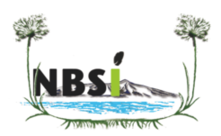Original aquatic biodiversity
The great majority of the aquatic flora and fauna fauna is represented by species derived from other parts of Africa and the World. This scarcity of local aquatic species is likely related to the frequent water level change and repeated desiccation that are characteristic of Naivasha's recent geological history.
Up to the 1980s, a diverse community of aquatic plants dominated the lake ecology. These included: Nymphaea caerulea (water lily), Najas pectinata, Ceratophyllum demersum, Potamogeton octandrus and P. schweinfurthii, (all underwater pondweeds) Hydrocotyle ranunculoides (a floating creeper. Severe grazing by the Red Louisiana crayfish (Procambarus clarkii) which was introduced as an additional fishery catch in the 1970s, strongly reduced and then eliminated all submerged macrophytes, such that Naivasha became dominated by plankton and by floating alien plants (Salvinia molesta had arrived in the 1960s) (Harper 1992). The visually dominant beds of water lily were completely wiped out and the empty place was filled initially by the floating fern and later the water hyacinth (Eichhornia crassipes), which appeared in 1988 and is dominant today.
Today, scenes of many lily trotters (Actophilornis africanus) foraging among water lilies have been replaced by fewer individuals scrambling over the riparian floating mats of Water hyacinth.
The only native fish species, the black lampeye (Aplocheilichthys antinorii, Vinc., Poeciliidae) was last seen in 1964 and declared extinct, due to predation by black bass and possible competition by tilapia



